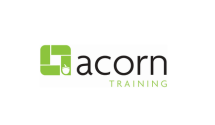Financial statements are important documents that show how a company is doing financially. If you're new to accounting, understanding these statements is essential. Here's a simple guide to help you get started.
What are financial statements?
Financial statements are reports that reflect a company's financial performance. They include information about the company's assets, liabilities, Equity, revenues, and expenses. There are three types of financial statements:
- The balance sheet
- The income statement
- The cash flow statement
Each statement gives a different view of the company's finances, helping you understand how it's doing.
The balance sheet
The balance sheet reflects what a company owns and owes at a specific time. It gives a picture of the company's financial position.
- Assets: These are things the company owns that have value, like cash, inventory, and equipment.
- Liabilities: These are the company's debts, such as loans and unpaid bills.
- Equity: This is what's left for the owner after subtracting liabilities from assets. It includes things like retained earnings and stock.
The balance sheet follows this formula: Assets = Liabilities + Equity.
The income statement
The income statement also called the profit and loss statement, shows how well a company did over a period, like a quarter or a year.
- Revenues: This is the money the company earns from selling goods or services.
- Expenses: These are the costs of running the business, such as salaries, rent, and utilities.
- Net income: This is the profit or loss after subtracting expenses from revenues. If revenues are higher than expenses, the company makes a profit. If not, it makes a loss.
The cash flow statement
The cash flow statement monitors the flow of cash in and out of the company over a period. It shows how the company manages its cash.
- Operating activities: This section shows cash flows from the company's main business activities, like sales and payments for expenses.
- Investing activities: This section includes cash flows from buying or selling assets, such as equipment.
- Financing activities: This section covers cash flows related to borrowing money, repaying debt, and issuing or buying back stock.
How financial statements work together
Each financial statement gives different information, but they all connect. For example:
- The net income coming from the income statement is included in the balance sheet's equity section.
- Cash flow from operating activities affects the cash balance shown on the balance sheet.
Looking at all three statements together helps you get a complete picture of the company's financial situation.
Common terms to know
Here are some key terms to help you understand financial statements better:
- Assets: Things the company owns that have value.
- Liabilities: Debts or obligations the company owes.
- Equity: The owner's share in the company, calculated as assets minus liabilities.
- Revenue: The money earned from business activities.
- Expenses: Costs involved in running the business.
- Net income: The profit or loss after expenses are deducted from revenues.
Conclusion
Understanding financial statements helps you see how a company is performing. The balance sheet reflects assets, liabilities, and Equity. The income statement shows profits and losses over a period. The cash flow statement shows a picture of the cash management. Learning these basics and how they connect will give you valuable insights into a company's financial health.






















